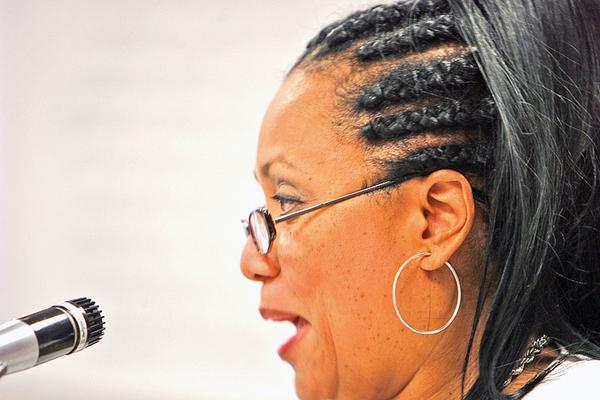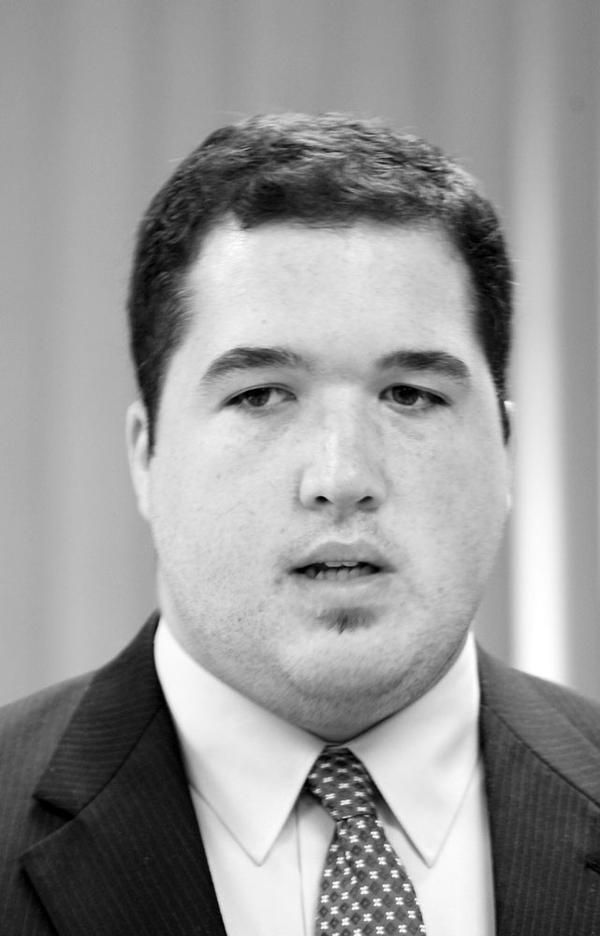Youngstown schools welcome state panel

Youngstown City Schools Superintendent Wendy Webb, Tuesday, August 25, 2009.

NOT A HAPPY CAMPER: Anthony Catale, president of the Youngstown Board of Education, said the district’s academic emergency rating on its state local report card is “absolutely unacceptable.” The district will be working to improve academic performance, he said at a Tuesday press conference.
- 2009 School Report Cards
By Harold Gwin
he Academic Stress Commission will work to improve academic performance in the worst-rated district in Ohio.
By HAROLD GWIN
VINDICATOR EDUCATION WRITER
YOUNGSTOWN — The president of the Youngstown Board of Education said the district will welcome assistance from the state in mapping out plans to improve student performance.
“I think we need additional guidance and direction in terms of academics in the district,” said Anthony Catale, a day after the Youngstown City School District was rated in academic emergency, the lowest rating under the state local report card system.
Youngstown is the only one of 610 public school districts in the state to be given that rating.
The report card looks at student performances on achievement tests, attendance rates, graduation rates and year-to-year academic progress.
Deborah Delisle, Ohio’s superintendent of public instruction, said the Ohio Department of Education will send an Academic Distress Commission to Youngstown to assist in devising a strategy to improve academic performance.
The commission concept was created by the state Legislature in 2007. A commission can be assigned only to a district in academic emergency that has failed to make adequate yearly academic progress for four more consecutive years.
No school district has had that emergency rating since the 2004-05 school year. Youngstown will be the first to get a commission.
That body will have extensive power, even to the point of removing administrators, but Delisle said she’s looking at a more collaborative approach in an effort to identify the best practices and procedures and come to a mutual agreement with the district on the best course of action.
“That’s been our approach all along,” said ODE spokesman Scott Blake, pointing out that the state prefers to work with the local school authorities.
The commission does have authority behind it to direct changes, but, at the end of the day, control of the district returns to the local people, so it is better to work in a collaborative fashion as a plan is devised, he said.
Wendy Webb, Youngstown school superintendent, said the district has already been working closely with ODE representatives to find ways to improve.
A state assessment found the district’s goals are aligned with state educational standards, but what is being taught in the classroom doesn’t always fall in line with those standards.
The district’s strategic plan for education is being revised, and aligning those standards will be a focal point, she said, pointing out that it makes no sense not to teach children subject matter on which they will be tested.
“We look forward to working with the state to help improve student performance,” said William Bagnola, president of the Youngstown Education Association, the teachers’ union.
Although Catale said there are no excuses for the district’s report card rating, he did point out that cutbacks due to efforts to recover from fiscal emergency and a school building program that has been shifting students and teachers around for the past several years are factors to be considered.
Bagnola agreed.
“When you cut as drastically as we have, you can’t help but affect what goes on in the classroom,” he said.
The district has cut some $30 million in spending over the last three years, and the number of teachers has been reduced from about 800 in 2005-06 to 585 this year.
The school construction has caused a lack of stability, both for students and teachers as they get moved around, Bagnola said, adding that any number of things can affect test scores.
“Everybody’s working hard,” he said, including parents.
“We are seeing an increase in our parental support,” said Webb, noting that the numbers showing up at parent meetings scheduled by the district are increasing.
“We are not happy where we’re at,” she said, referring to the report- card rating. The district will work diligently to improve the academics and give children an opportunity for a quality education, she said.
Catale said he welcomes the Academic Distress Commission, but he’s concerned about its longevity. Under Ohio law, it can remain operational until Youngstown achieves a continuous improvement ranking or better on its report card for two of three consecutive years.
Youngstown has never reached the continuous improvement level since state report card ratings began in 2000. The district was in academic emergency in 2000, 2001 and 2002 and advanced to academic watch in 2003. It stayed in academic watch in 2004 but dropped to academic emergency again in 2005.
It moved up to academic watch in 2006 and retained that ranking in 2007 and 2008. Continuous improvement is one step higher.
Just when the commission will be activated isn’t clear, but it is expected to be soon.
The superintendent of public instruction must officially notify the school district that a commission will be named and ask Catale for the names of two people to serve on that body. Catale said he is awaiting that notification.
gwin@vindy.com
Academic Distress Commission
The Ohio Department of Education will assign an Academic Distress Commission to the Youngstown city schools to help devise an academic recovery plan designed to move the district from academic emergency to continuous improvement or better on its annual state local report card.
Goal: Improving a district’s academic performance.
Membership: Five members, three appointed by the state superintendent of public instruction, two by the local school board president.
Time frame: Within 120 days of its first official meeting, the commission must adopt an academic recovery plan that includes short- and long-term actions to improve performance, give the sequence and timing of those actions, identify resources that will be applied and outline procedures for evaluating improvement efforts.
Approval: The superintendent of public instruction has the authority to reject the plan and suggest acceptable modifications.
Assistance: The commission must seek input from the district board of education on ways to improve academic performance, but the authority’s decision is final.
Authority: The commission has the power to: Appoint school building administrators and reassign administrative personnel; terminate the contracts of administrators or administrative personnel; contract with a private entity to perform school or district management functions. The commission has limited authority over new or renewing employee contracts to the extent that such contracts can’t render any commission decision unenforceable.
Longevity: The commission shall remain in operation until the district reaches the academic rating of continuous improvement or better for two of three consecutive years, but can be dissolved earlier by the superintendent of public instruction if the district has shown it can perform adequately on its own.
Source: Ohio Department of Education
 43
43
